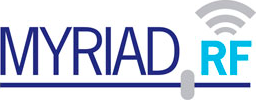Hello,
I’m trying to use my LimeSDR USB ([07:41:55] INFO: Connected Control port: LimeSDR-USB FW:4 HW:4 Protocol:1 GW:2.23 Ref Clk: 30.72 MHz) to generate signals between 10MHz and 20MHz to test an rf amplifier. I just need a carrier.
I modified the “basicTX” program from the LimeSuite package to try and get below 30 MHz but the signal is very distorted. None of the other posts on this Discord group seem to have all the answers.
Here is the modified code:
/**
@filefile basicTX.@authorpp
@author Lime Microsystems (www.limemicro.com)
@brief minimal TX example
*/
#include
#include
#include <math.h>
#include “lime/LimeSuite.h”
using namespace std;
//Device structure, should be initialize to NULL
lms_device_t* device = NULL;
int error()
{
if (device != NULL)
LMS_Close(device);
exit(-1);
}
int main(int argc, char** argv)
{
const double frequency = 31e6;
const double losc_freq[15] = {10000000, 10000000, 20000000, 20000000, 20000000, 20000000, 20000000, 20000000, 20000000, 20000000, 20000000, 20000000, 20000000, 20000000, 20000000 };
const double *nco = &losc_freq[1] ; // NCO frequency
double nco1 = 0;
double phase = 0;
double lpfbw = 40000000;
const double sample_rate = 10e6;
const double oversample_rate = 0;
const double tone_freq = 1e6; //tone frequency
const double f_ratio = tone_freq/sample_rate;
//Find devices
int n;
lms_info_str_t list[8]; //should be large enough to hold all detected devices
if ((n = LMS_GetDeviceList(list)) < 0) //NULL can be passed to only get number of devices
error();
cout << "Devices found: " << n << endl; //print number of devices
if (n < 1)
return -1;
//open the first device
if (LMS_Open(&device, list[0], NULL))
error();
//Initialize device with default configuration
//Do not use if you want to keep existing configuration
//Use LMS_LoadConfig(device, "/path/to/file.ini") to load config from INI
if (LMS_Init(device)!=0)
error();
//Enable TX channel,Channels are numbered starting at 0
if (LMS_EnableChannel(device, LMS_CH_TX, 0, true)!=0)
error();
//Set sample rate
if (LMS_SetSampleRate(device, sample_rate, oversample_rate)!=0)
error();
cout << "Sample rate: " << sample_rate/1e6 << " MHz" << endl;
//Set LPFBW
if (LMS_SetLPFBW(device, LMS_CH_TX, 0, lpfbw) != 0)
error();
cout << "LPFBW: " << lpfbw/1e6 << " MHz" << endl;
//Set NCO frequency
if (LMS_SetNCOFrequency(device, LMS_CH_TX, 0, nco, 0) != 0)
error();
cout << "Set NCO frequency: " << *nco/1e6 << " MHz" << endl;
// Set NCO index
if (LMS_SetNCOIndex(device, LMS_CH_TX, 0, 1, true) != 0)
error();
cout << "NCO index: 1" << endl;
// Get NCO frequency
if (LMS_GetNCOFrequency(device, LMS_CH_TX, 0, &nco1, &phase) != 0)
error();
cout << "Get NCO frequency: " << nco1/1e6 << " MHz /Phase: " << phase << endl;
//Set center frequency
if (LMS_SetLOFrequency(device,LMS_CH_TX, 0, frequency)!=0)
error();
cout << "Center frequency: " << frequency/1e6 << " MHz" << endl;
//select TX1_1 antenna
if (LMS_SetAntenna(device, LMS_CH_TX, 0, LMS_PATH_TX1)!=0)
error();
//set TX gain
if (LMS_SetNormalizedGain(device, LMS_CH_TX, 0, 0.7) != 0)
error();
//calibrate Tx, continue on failure
LMS_Calibrate(device, LMS_CH_TX, 0, sample_rate, 0);
//Streaming Setup
lms_stream_t tx_stream; //stream structure
tx_stream.channel = 0; //channel number
tx_stream.fifoSize = 256*1024; //fifo size in samples
tx_stream.throughputVsLatency = 0.5; //0 min latency, 1 max throughput
tx_stream.dataFmt = lms_stream_t::LMS_FMT_F32; //floating point samples
tx_stream.isTx = true; //TX channel
LMS_SetupStream(device, &tx_stream);
//Initialize data buffers
const int buffer_size = 1024*8;
float tx_buffer[2*buffer_size]; //buffer to hold complex values (2*samples))
for (int i = 0; i <buffer_size; i++) { //generate TX tone
const double pi = acos(-1);
double w = 2*pi*i*f_ratio;
tx_buffer[2*i] = cos(w);
tx_buffer[2*i+1] = sin(w);
}
cout << "Tx tone frequency: " << tone_freq/1e6 << " MHz" << endl;
const int send_cnt = int(buffer_size*f_ratio) / f_ratio;
cout << "sample count per send call: " << send_cnt << std::endl;
LMS_StartStream(&tx_stream); //Start streaming
//Streaming
auto t1 = chrono::high_resolution_clock::now();
auto t2 = t1;
while (chrono::high_resolution_clock::now() - t1 < chrono::seconds(180))
{
//Transmit samples
int ret = LMS_SendStream(&tx_stream, tx_buffer, send_cnt, nullptr, 1000);
if (ret != send_cnt)
cout << "error: samples sent: " << ret << "/" << send_cnt << endl;
//Print data rate (once per second)
if (chrono::high_resolution_clock::now() - t2 > chrono::seconds(1))
{
t2 = chrono::high_resolution_clock::now();
lms_stream_status_t status;
LMS_GetStreamStatus(&tx_stream, &status); //Get stream status
cout << "TX data rate: " << status.linkRate / 1e6 << " MB/s\n"; //link data rate
}
}
//Stop streaming
LMS_StopStream(&tx_stream);
LMS_DestroyStream(device, &tx_stream);
//Disable TX channel
if (LMS_EnableChannel(device, LMS_CH_TX, 0, false)!=0)
error();
//Close device
if (LMS_Close(device)==0)
cout << "Closed" << endl;
return 0;
}


